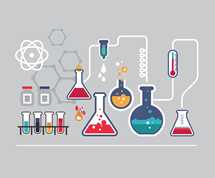Annual survey outlines how new science standards are influencing STEM learning in districts nationwide
A new survey of district and building-level STEM supervisors and educators reveals how the Next Generation Science Standards (NGSS) or other updated science standards, as well as STEM learning goals, are influencing STEM education decisions or purchases.
The 2015 Business Report: National Survey STEM Education, from IESD, Inc. and STEM Market Impact, surveyed 5,002 K-12 district and school science and STEM supervisors and teachers online.
About 80 percent of respondents said they were familiar with the NGSS. Of those familiar with the standards, 6 percent reported a negative impression.
Next page: What the STEM learning survey reveals
The most common challenges facing STEM education, according to survey respondents, include:
- Insufficient technology to support STEM education (41 percent)
- Insufficient class time to adequately cover the subject discipline (37 percent)
- Insufficient funding specifically designated for K-12 STEM (36 percent)
- Insufficient professional development for STEM (33 percent)
When it comes to science curriculum, fewer than 10 percent of respondents whose states recently adopted the NGSS or their own state science standards plan to purchase a new science curriculum. A majority of survey respondents from states with recently-adopted standards said incorporating project-based learning will be a priority for new instructional resources.
Among survey respondents in states that recently adopted the NGSS Or their own science standards, incorporating project-based learning (53.6 percent) and incorporating engineering practices (40.3 percent) were identified as critical professional development topics in relation to implementing the new standards.
Sixty-eight percent of respondents said their schools or districts currently offer career and technical education programs, 65 percent of respondents said they currently offer computer science/programming courses, 59 percent of survey respondents currently offer introduction to technology courses, and 50 percent of respondents said they offer robotics courses.
Surveyed science/STEM supervisors at the district and school levels reported the following alternative STEM programs:
- Professional development in STEM for elementary school teachers (46 percent)
- STEM courses designed around project-based learning (45 percent)
- STEM partnerships with a university or research institution (45 percent)
Survey responses reveal that “in general, the higher the school level, the more likely their teachers were to have access to digital tools.”
At the upper elementary level:
- 61 percent of surveyed district science/STEM supervisors said most teachers do not have access to digital tools.
- 33 percent said most teachers share digital tools among classrooms or labs.
- Just 5 percent said most teachers have a set of digital tools in their classroom or lab.
At the middle/junior high level:
- 56 percent of surveyed district science/STEM supervisors said most teachers share digital tools among classrooms or labs.
- 31 percent said most teachers do not have access to digital tools.
- 12.1 percent said most teachers have a set of digital tools in their classroom or lab.
At the high school level:
- 59 percent of surveyed district science/STEM supervisors said most teachers share digital tools among classrooms or labs.
- 23 percent said most teachers do not have access to digital tools.
- 17 percent said most teachers have a set of digital tools in their classroom or lab.
Survey respondents also identified priority objectives for students in science and STEM courses:
- Understanding structure and function: the way in which an object or living thing is shaped and its substructure determines many of its properties andfunctions (56 percent).
- Investigating and explaining causal relationships and the mechanisms by which they are mediated (46 percent).
- Observing and explaining patterns that guide organization and classification (46 percent).
- Tracking and understanding conditions under which energy and matter flows into, out of, and within systems (41 percent).
Click here [1] for more details about the survey, including methodology.
